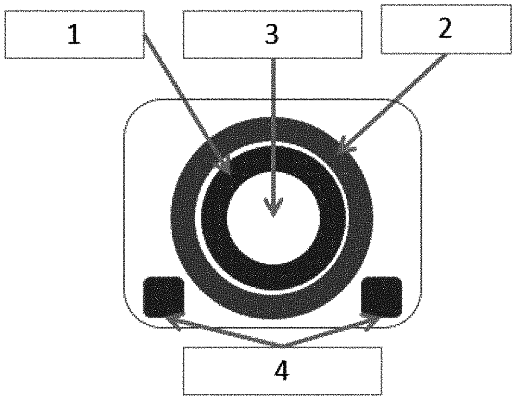| CPC A61B 3/18 (2013.01) [A61B 3/0008 (2013.01); A61B 3/112 (2013.01); A61B 3/145 (2013.01); A61B 3/156 (2013.01); A61B 5/4064 (2013.01); A61B 2576/026 (2013.01)] | 4 Claims |

|
1. An electronic flashlight-like pupillometer for measurement of direct and consensual pupillary light responses of the eyes of a patient, which pupillometer comprises:
a housing;
an imaging device in the housing;
a set of infrared light sources in the housing for image and/or video acquisition;
an infrared light filter in front of the imaging device in the housing that allows the passage of infrared light and substantially blocks all visible lights;
a first visible light source in the housing that can provide a visible light to the first eye of the patient;
a second visible light source that is outside of the housing, extendable from the housing, and can provide a visible light to the second eye of the patient when the imaging device is simultaneously taking image and/or video of the first eye;
an image and/or video acquisition component consisting of a light subsystem and an image/video acquisition subsystem configured to manipulate the visible light source, the infrared light source, and the imaging device for acquiring image/video from both eyes, and recording direct and consensual pupillary reflex response:
and
a data processing component configured to determine pupil size and shape using a convolution neural network and to quantify pupillary response for disease diagnosis and determination of lesion locations;
wherein the infrared light source in the housing can continuously illuminate the first and/or second eye of the patient with infrared light from the infrared light source during a test to provide the necessary illumination for the image/video acquisition.
|